What to do when it’s 110F in the shade?
My faithful—and normally cool—readers in the Pacific Northwest got a nasty shock a few weeks ago when temperatures soared and they got a taste of life in Death Valley. Portland hit 116F, Seattle reached 108F and Chilliwack, British Columbia, where retailer Brian Minter of Minter Country Garden plies his trade, topped 41C, or 106F.
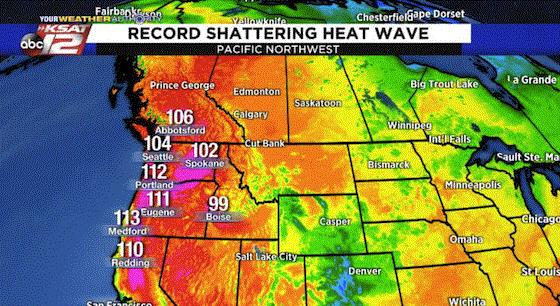
Courtesy of KSAT.
What does heat like that do to people and plants, especially in an area where the average July high is 75F (24C)? Brian—once he was cool enough to think about it—sent me some “random observations” of the heat wave’s impact:
Working conditions for team members was an issue
- Work Safe B.C. will not allow working in temperatures over 38C (100F)
- Earlier and shorter shifts, water stations, more fans and working with the staff to ensure safety
- Some garden centres and greenhouses closed, or only opened in the morning, both in the Seattle and Vancouver area
- Customers: Some extra care and attention for their pets, i.e. water bowls
Greenhouse plants
- Essential to keep ahead of the watering curve
- In spite of this, many plants were burnt, stretched, finished prematurely or stressed, i.e. dahlias, veggies and herbs
- Hanging baskets were stressed and many plants had to be cut back
- Many growers, especially because of sudden drop-off in June sales and low prices, decided to discard bedding plants instead of maintaining them
Outside crops
- Many burned because normal irrigation was not sufficient
- One surprise: perennials are incredibly resilient
- Nursery crops—flowering shrubs, conifers—a good deal of burn, but recoverable
- Macrophylla hydrangeas—most susceptible to burn
Farm crops (the Fraser Valley has huge raspberry and blueberry production)
- Burned raspberry foliage and burnt fruit
- Many blueberry fruits burned
- Tree fruits – a lot of sun scald on fruits
Landscape observations
- Many conifers, like Alberta spruce, burned on south and west sides
- Macrophylla hydrangea—significant burning of foliage and flowers
- Broad-leaf evergreens, i.e. rhododendron—severe foliage burning
- Street trees—many dead and tremendous tip burning
- Hedging cedars—have shallow roots and many dead
Newly planted trees, shrubs, perennials, annuals
- There will be lots of returns due to inexperience in care and watering, i.e. too
little, too late, too much watering

Heat wave (continued)
Brian shared the following thoughts about planning ahead for heat events like the one the PNW just enjoyed:
“We only pay attention to cold tolerance in USDA plant zones. We now must look at heat tolerance zoning.
“Sufficient watering could have prevented a great deal of damage in landscape plants. The most-damaged plants did not have sufficient water in root zones. More frequent irrigation during the day would have prevented a great deal of damage.
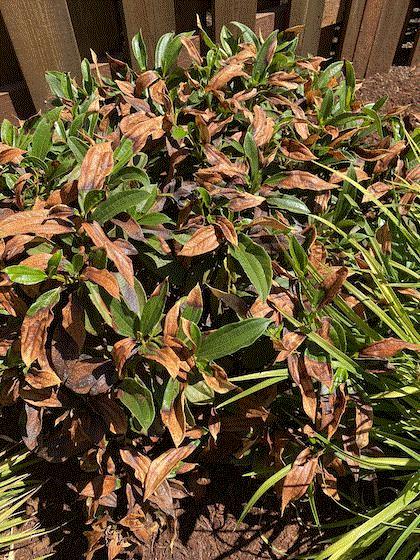
Sunburned rhododendron. Photo: Kym Pokorny, OSU Extension Service.
“This heat anomaly taught us a lot about the new weather realities, i.e. the choice of plants, the new growing realities, improving irrigation systems and automation, more efficient drip irrigation systems, plant heat tolerance and the necessity of landscape maintenance.
“For greenhouses and garden centres: A fresh look at cooling systems and their necessity. We installed one in our main store and tropical section a few years ago, and these areas were cool during the heat wave.
“Fire-proofing landscaping is now becoming an issue, especially in the interior of B.C. where we have 200 fires currently burning. I am doing a video next week for the B.C. Forest Service on which plants are most likely to burn and transmit fire."
Thanks very much for the observations from the scene of the heat wave, Brian!
Comments or questions? Let me know HERE.

Greenhouse greens recalled for salmonella
Our controlled environment agriculture (CEA) beat reporter Jen Polanz sent me this news update:
It happens rarely, but it still happens: CEA leafy greens grower BrightFarms issued a voluntary recall of leafy greens from its Rochelle, Illinois, growing operation on July 15 due to the potential for salmonella contamination.
According to information on the FDA website, “Interview data and shopper card records show that six people ate or bought multiple types of BrightFarms brand salad products before they got sick. FDA conducted a traceback investigation and identified the farm in Rochelle, Illinois, as the likely source of the BrightFarms brand salad bought by people who became ill.”
The recall includes nine types of packaged leafy greens sold at multiple retailers in Illinois, Wisconsin, Iowa and Indiana. Additional retailers may be affected, and consumers are being encouraged by the FDA to discard or return the affected products. The recall only affects the listed products grown at the Rochelle location, not any of BrightFarms’ other growing facilities and not other products grown at Rochelle.
I reached out to founder and President Paul Lightfoot, who got a statement back to me (I received it after I sent my most recent Inside Grower newsletter, so this is the first time you’re seeing his comments):
“BrightFarms is committed to providing wholesome products, and the health and safety of consumers is the company’s number one priority. We are taking this action out of an abundance of caution after being notified of illnesses among eight consumers, some of whom purchased or consumed the above products during the month of June. BrightFarms has never had any regulatory, consumer or other third-party reports of salmonella associated with any of our products or facilities. We are continuing to conduct our own thorough investigation with the assistance of a team of outside experts, and we have also assured the FDA and CDC of our full cooperation as they continue their own investigations.”
In what I think is a wise move, BrightFarms has been transparent on the website about the recall and includes an FAQ for consumers about it. You can find that HERE. I’ll stay in the loop and let you know what comes out of it when I hear more!

Are buildings getting their fair share of the plant craze?
As gardening benefits from the pandemic, and as foliage plants boom like it’s 1975 (thank you, Instagram!), are the world’s commercial real estate investors participating in the trends?
They ARE saying they want to invest in “healthy” buildings, says Mary Golden, advocacy incubator & executive administrator for Green Plants for Green Buildings (GPGB). She had a piece on the topic in the most recent National Horticulture Foundation newsletter.
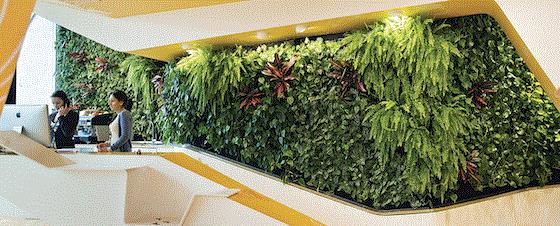
Photo: Geoplast.
However, according to a survey conducted by GPGB earlier this year, the two top barriers building professionals encounter when incorporating nature into their buildings are maintenance costs, followed by installation costs. How do we get them past that? Show them the research that’s been conducted over the past 50 years on the benefits of plants on people. Such as:
In the workplace: Reduced absences by 10%; increased productivity by 12%; higher levels of wellbeing (15%) and creativity (15%), and improvements in concentration (19%). Using Department of Labor statistics, this yields a 3:1 return on the investment in plants.
Access to nature in healthcare facilities: Shorten post-surgical hospital stays by 8.5% (about 1 day), shorten depression-related hospital stays by 2.6 days; reduced the need for post-surgery medication by 20% to 22%. Incorporating nature into facilities can reduce the cost of both patient care and staffing while improving medical outcomes.
Access to nature in the classroom: 20% to 26% faster progress through curricula; improved attendance by 3.5 days per year; improved test scores by 5% to 14%. Not only does this data indicate institutional savings, with an increase of 20% in progress through curriculum, it also opens the possibility of adding enrichment programs to the student’s experience.
Access to nature in retail: Consumers are willing to pay up to 25% more for goods; and are prepared to travel farther, pay more for parking, and will stay longer in locations with greenery. This is of growing economic significance for brick-and-mortar stores competing for customers with online stores.
If you have the opportunity to influence real estate decision-makers, share this data with them and get more of our product in and around the world’s buildings!
To learn even more about making the case for nature in the built environment, go to greenplantsforgreenbuildings.org/biophilia-training and download for free “The Economics of Biophilic Design.”

Summertime edible containers from NGB
Looking for a good summertime item? Or maybe a workshop idea? The National Garden Bureau has put together some quick and easy summer edibles containers that you can create as easy as “1, 2, 3”—meaning single-variety, two-plant containers and three-plus plant containers.
Check it out at ngb.org/2021/07/15/edible-containers.

There, you’ll find variety suggestions for single-variety baskets and pots, good pairings for two-plant pots (tomatoes and basil, peppers and marigolds, or peppers and cilantro, for instance).
For a three-plant edible garden, how about Salvia Goldblatt, Thyme Mystic Lemon and Oregono Gold Nugget (a mix they called “Barbecue Gold”) or the pizza-oriented Rosemary Abraxas, Thyme Mystic Lemon and Oregano Diabolo. But, of course, you can use your own favorites—the idea is to get ideas!
Abe scores his 15 states
GrowerTalks columnist (and Metrolina co-owner) Abe VanWingerden has long been a regular contributor to my spring sales survey, and I appreciate his input because it’s both thoughtful and thorough—his scores are based on data and science (“I never do a gut score,” he says). And he covers 15 eastern states, which helps provide a more thorough picture of how the country did as a whole. And even though Abe sells to the big boxes, there's no reason they should have better sales (and scores) than IGCs.
When I asked you to send in your total-season gut scores, Abe was just a tad late getting his to me, so I wasn’t able to include them in the total. But because they’re based on “data and science,” not gut, I wanted to include them. Here’s what Abe had to say about Metrolina’s season:
“It was a second strong season in a row. Yes, April was tough last year and great this year. Yes, June was tough this year and great last year, but still up 5%. July has been strong already, so I like the trends I am seeing. If we get supply right, we can continue to grow this business.”
North Carolina (10). “Up double digits in all areas in North Carolina. Second strong season in a row.”
South Carolina, Georgia, Tennessee, Alabama (10). “Not as strong last year, as the southern markets struggled at the onset of COVID, but made up for it this year. Alabama gets a 10+, it was strong every weekend and then some.”
Virginia, Kentucky, Ohio, New Jersey, Delaware, New York (8). “I give them a good score, as we were positive the second year in a row and these states were the biggest of the big rock stars last year. But ‘rain, rain go away’ was the mantra on both Mother’s Day and Memorial Day Weekends.”
West Virginia, Maryland (7). “Even worse than KY/OH/VA, but still positive. Washout weekend on Memorial Day put a damper on a good season, but still strong.”
Missouri (6). The Midwest just keeps getting hit by rain every year and this year was no exception. And it’s not just the rain, it’s the ill-timed rain on the big weekends.”
Pennsylvania (6). “An anomaly. I chalk it up to IGCs and other chains being open this spring, so they took some business back. [The state was the] most restrictive last year on IGCs being allowed to operate, but it had big gains last year and gave a bit back this year. Still decent, but not at the levels of other states.”
Summing up his total season, Abe says, “Overall, I give the year a 9 (last year I gave it a 10). Still got the sales, but had to work a bit harder for them and took a bit longer to come in. Still a great year and we are bullish for 2022.”
Thanks, Abe, for the thoughtful and data-driven scores. Questions or comments on what he reported? Email me HERE.

PW Landscape Roadshow at Cincinnati Zoo
The Proven Winners Landscape Roadshow is back in person and is coming to the Cincinnati Zoo & Botanical Garden this summer. Mark your calendar for Wednesday, August 25, 8:00 a.m. to 3:00 p.m.
You’ll meet Proven Winners’ landscape experts and enjoy a lineup of landscape presentations covering a wide range of topics, including “Stunning New Proven Winners Annuals to Enhance Your Landscape,” “Tried-and-True Shrubs for Midwest Landscapes,” “New Perennial Selections for the Landscape,” “Designing with All Seasons in Mind” and much more.
As a bonus, professional CEU credits are available for ONLA, INLA, ASLA and APLD members.
For more information and registration, go to: http://bit.ly/PWROADSHOW.
GreenTech Americas back on the calendar
It tried to launch last year, but we know what happened in 2020—nothing! So GreenTech Americas is having another go at their inaugural Mexico show on August 24 - 26 at the Querétaro Centro de Congresos, in Querétaro, Mexico, about three hours northwest of Mexico City.
GreenTech Americas is the sister show to GreenTech Amsterdam, which has emerged as a leading place to see the latest greenhouse and controlled-environment agriculture technology. The goal of the event is to bring awareness of the opportunities present in Mexico and Central America, a growing region for advanced agriculture. It looks like there are about 125 exhibitors from Mexico, the U.S., Canada, Europe and the Middle East. There’s also a roster of educational programs.
For more, and to sign up as an exhibitor or attendee, go to www.greentech.nl/americas.
I won’t be able to attend, but we’ll be there in support, as our Inside Grower magazine and newsletter is a media sponsor.
And even though it's 11 months off, don’t forget about GreenTech Amsterdam. It’s slated for June 14-16, 2022.

Register for Impact Washington
Registration is now open for AmericanHort’s 2021 Impact Washington Summit, being held September 20-22 in Washington D.C. The summit will feature a program of subject matter experts, Congressional champions for the industry, and meetings with lawmakers to discuss important issues impacting the green industry and participants’ own business.
Delivering this year’s keynote is Bob Worsley, former Republican State Senator (AZ), entrepreneur, innovator and author who’ll deliver remarks on the challenges of the current political divide and how it affects efforts for comprehensive immigration reform.
For more information and to register, go to americanhort.org/impact-washington-summit or contact hello@americanhort.org or (614) 487-1117.
Our resident political junkie, Jen Zurko, will be there lobbying on the industry's behalf.
Certified American Grown has launched new website
Generally, I don’t view new websites as hot news, but seeing how it’s our industry’s newest trade organization, I thought I’d put it on your radar. Certified American Grown, which is an offshoot of the now-defunct California Cut Flower Commission, has a new website where you can learn all about this association of American cut flower and foliage growers. Find it at www.americangrownflowers.org.
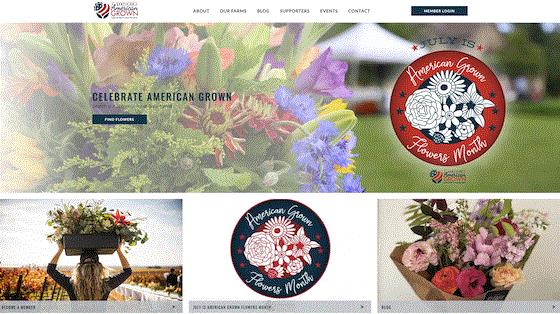
What? You didn’t know there were any American cut flower growers left? There sure are—plenty, in fact, and their numbers are growing every year. CAG is there to support them in their efforts to boost awareness of locally grown cuts.
Check out the new site to search for member farms and wholesalers near you, upcoming events (let’s hope their Field to Vase dinners return soon—I’ve been to two and they’re a blast!) and more.
Joy Keeler joins Danziger
Danziger continues to expand its presence in the North American market with the addition of team member Joy Keeler, new sales and product representative dedicated to the Canadian market.

You may recognize Joy’s name—she was a long-time marketing specialist for Jolly Farmer Products of New Brunswick, Canada. More recently, she was with Colonial Florists in Ontario.
Joy will develop and maintain relationships within Canada, while working closely with the rest of the North America team to support growers, brokers and retailers in her area.
“Joy’s knowledge of the industry and the unique challenges of running a greenhouse business make her a strong addition to the Danziger team,” says Mike Fernandez, North American bedding market manager. “At the heart of our business is a key focus of customers. Adding Joy to the team will help us to expand our support of the Canadian market and to strengthen relationships with our current and future grower partners.”
A coir/HydraFiber blend now available
Profile Products, makers of HydraFiber “engineered fiber” substrate, has partnered with a company called FibreDust, an expert in coconut coir production, to create a pre-blended mix of coir and HydraFiber. It's a good alternative to 100% coir, they say, as that coconut fiber product can have issues with EC, potassium and sodium. The new mix is available as 80 cubic feet of compressed blocks per pallet.
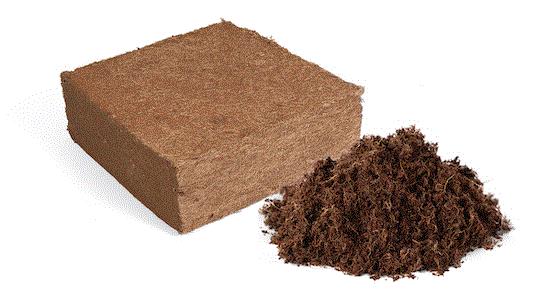
“This sustainable combination of coir and HydraFiber in one product will be a gamechanger for growers and blenders by eliminating the challenge of trying to separately source and blend the materials onsite,” said Jennifer Neujahr, director of business development for HydraFiber. “Growers will be able to easily reap the benefits of both raw materials in a convenient, all-in-one, high-yield product.”
The blocks can be used as a stand-alone material with an amendment added onsite or incorporated with other substrate materials. Process them the same way you currently process your coir products—they don’t require the specialized HydraFiber processing equipment.
For more, visit bit.ly/FibreDustHydraFiberBlocks.

Ball Seed Customer Day July 28-30
A friendly reminder that Ball Seed Customer Days will be next week, July 28 to 30. Ball Seed has decided to give you your choice of three days to visit their many acres (8?) of trial and display grounds this year. But it’s open and friendly as always, with lunch available all three days.
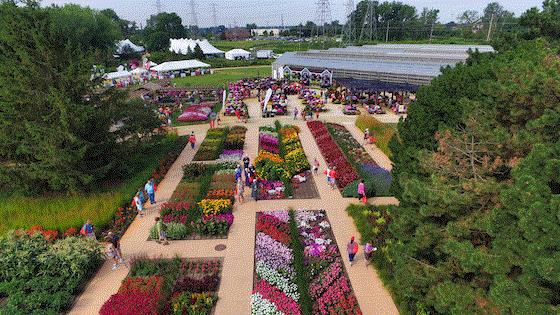
The address for your Garmin (boy, did I just date myself!) is 1017 W. Roosevelt Road, West Chicago, IL 60185.
Click HERE to watch a welcome video by Susannah Ball and to register for one of the three days.
You know I’ll be roaming around as much as possible. And if you see Snoopy overhead, give a Wave (that's a petunia joke).
Finally …
Where am I off to now? Besides Ball Seed Customer Day, I'll be hitting the Michigan Garden Plant Tour Monday through Wednesday, accompanied by Jen Zurko and Bill Calkins.
Our goal? See the new varieties that weren’t available at CAST last month, plus anything else new that might strike your customers' fancies. Our trip includes stops at Walters Gardens, Pell Greenhouses, Danziger (actually Marketing Manager Mike Fernandez' home, where he grows a Danziger trial), Mast Young Plants, Michigan State, Raker-Roberta’s and Four Star Greenhouse—it’s going to be a busy week!
Watch for a report in a special edition (or two) of Acres of Buzz! shortly after we return.
See you next time!

Chris Beytes
Editor
GrowerTalks and Green Profit
This e-mail received by 25,319 loyal readers!
Thanks to my loyal sponsors, who help me reach the 25,319 readers of Acres Online in 66 countries. Want to be one of them (a sponsor, that is)? Give Paul Black a shout and he'll hook you up.